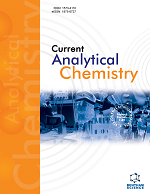
Full text loading...

Inorganic ammonium salts, such as ammonium chloride (NH4Cl), can form electrolytes due to their protonated ammonium ions acting as proton carriers. This study investigates the use of NH4Cl-doped polyacrylamide hydrogel as a flexible proton conductor for fuel cell applications.
A freestanding hydrogel membrane was fabricated through in situ polymerization of ethylene glycol dimethacrylate and acrylamide within aqueous NH4Cl. The hydrogel's mechanical and conductive properties were characterized, and it was assembled into a fuel cell to evaluate its performance.
The NH4Cl-doped hydrogel exhibited a fracture tensile stress of 90 kPa at 462% elongation. The conductivity measurements, which varied with temperature, revealed that proton conduction primarily followed a vehicle mechanism, showcasing an impressive ionic conductivity of 119 mS cm−1. The fuel cell achieved a maximum power density of 31.9 mW cm-2, marking a solid performance.
The “structure-performance” relationship of inorganic ammonium salt-doped hydrogels is clarified through multi-scale characterization. The dual influence mechanism of NH4+ concentration on proton conduction has been revealed. The developed HGA-n material combines excellent mechanical strength and proton conductivity, and its power density provides a new option for gel electrolytes used in fuel cells.
A flexible proton conductor is prepared by doping ammonium chloride (NH4Cl) into polyacrylamide hydrogel for the first time and is successfully assembled into a fuel cell. This work demonstrates a novel approach for utilizing inorganic ammonium salts in electrochemical applications, offering a promising route for developing flexible proton-conducting materials for fuel cells.